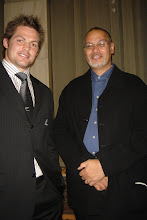First up the Timber Industry.
 Early timber trade centres in the north. Its based mainly around the north and especially the Hokianga. Many ships called in around New Zealand to pick up timber in ad hoc arrangements but a real 'trade' developed in the Far North. It was aimed at extracting wood for ships spars and later developed into cut wood for the Sydney buidling trade.
Early timber trade centres in the north. Its based mainly around the north and especially the Hokianga. Many ships called in around New Zealand to pick up timber in ad hoc arrangements but a real 'trade' developed in the Far North. It was aimed at extracting wood for ships spars and later developed into cut wood for the Sydney buidling trade.Kauri was the main timber felled later as building trade in Australia and Auckland - the shift to Auckland resulted in an explosion in building for the new Capital. The Bush frontier would last well into the next century.
The trade created a new type of New Zealander, the Bushman. Living on the edge of the bush (and sometimes well inside it) they were almost devoid of female company resulting in the idea of'mateship' which was also developing in Australia. Groups of men living for long periods in close proximity and in occupations which were extremely dangerous meant that real and long lasting friendships were created.
Good manners and behaviour was expected and any who failed to follow the (often unwritten) rules would not last long in the camp. The worst that could be said of a man was that he did not pull his weight on the job or that he was a thief or a cheat (gambling and alcohol was strictly banned in most camps). Any of these failings could mean that no-one would employ a man and he would have to leave the district and hope his reputation did not follow him to his new job.
Miles Fairburn has used some examples to justify his idea of transience and lack of community. Subsequent research has seriously challenged this with many examples of 'mates' or familial groups working together for many years - sometimes for decades. The sense of community extended to welfare, injured workers were ferried out by mates who would carry thier friend out on their shoulders or backs. If a death occurred leaving a family, the ir effects (clothes, tools etc) would be auctioned with their mates often paying well over the odds for the second-hand gear.
Timber saw the development of new technology, Pit Saws gave way to Steam and Bullocks were sometimes replaced by Bush trams (converted Traction Engines!!!) The Timberjack was invented to assist the movemnet of the giant logs, as was the the Kauri Dam to move logs through hilly terrain, especially where the Cordoroy Roads and Bullocks could not.
 The Timber industry opened up new areas, assisting in the spread of farming and established many small towns in new area, especially the 70 Mile bush between Wellington and the Hawkes Bay, the Central North Island and in the Taranaki. The Sawmill that followed the workers attracted other small businesses . If the timber lasted long enough a small town could develop, sometimes it might be able to withstand the loss of the trade and continue to flourish as farming replaced the trees. ( Dannevirke or Featherston). If the timber ran out too quickly the town might not survive the loss. (Anyone remember Mauriceville?)
The Timber industry opened up new areas, assisting in the spread of farming and established many small towns in new area, especially the 70 Mile bush between Wellington and the Hawkes Bay, the Central North Island and in the Taranaki. The Sawmill that followed the workers attracted other small businesses . If the timber lasted long enough a small town could develop, sometimes it might be able to withstand the loss of the trade and continue to flourish as farming replaced the trees. ( Dannevirke or Featherston). If the timber ran out too quickly the town might not survive the loss. (Anyone remember Mauriceville?)




Huh, I should've put that in my evaluation. Would I have gotten excellence then? =P
ReplyDeleteAlthough my topic probably means it won't be all that useful. My own fault. 'Twas interesting though.